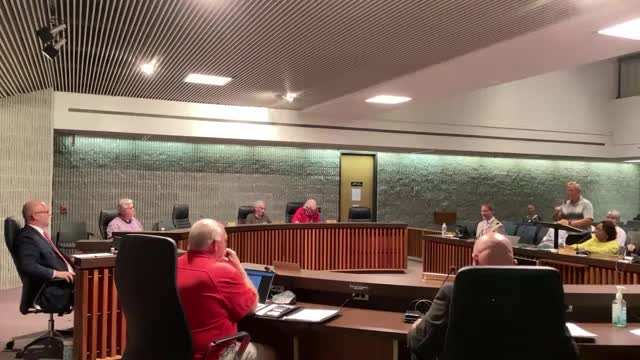City grapples with tree ordinance amid budget crisis
August 21, 2024 | Marion City, Grant County, Indiana
This article was created by AI summarizing key points discussed. AI makes mistakes, so for full details and context, please refer to the video of the full meeting. Please report any errors so we can fix them. Report an error »

During a recent city council meeting, officials discussed the long-standing tree ordinance, which has been under consideration since its inception in the early 2000s. The ordinance aims to clarify the definitions and responsibilities regarding public and private trees, but significant challenges remain.
The engineering department highlighted the limited budget allocated for tree management, which has been further strained by the increasing number of vacant properties and the associated tree maintenance issues. Currently, the city can only afford to address a handful of tree removals each year, with costs ranging from $900 to $5,000 per tree, depending on size and complexity.
A key point of contention is the existing language in the ordinance that allows the city some authority to remove trees from private properties. However, the consensus among various administrations has been that tree maintenance is primarily the responsibility of property owners. This has led to confusion and discrepancies in enforcement.
Additionally, the ordinance includes provisions for a tree board, established in 2002, which has not been active since its inception. This lack of oversight has resulted in an overwhelming number of tree-related issues being funneled to the engineering department, which lacks the manpower to adequately address them.
As the city grapples with these challenges, officials acknowledged the need for a reevaluation of the tree ordinance and its funding mechanisms to better manage the urban forest and ensure public safety. The discussion underscored the urgency for a more sustainable approach to tree management in the community.
The engineering department highlighted the limited budget allocated for tree management, which has been further strained by the increasing number of vacant properties and the associated tree maintenance issues. Currently, the city can only afford to address a handful of tree removals each year, with costs ranging from $900 to $5,000 per tree, depending on size and complexity.
A key point of contention is the existing language in the ordinance that allows the city some authority to remove trees from private properties. However, the consensus among various administrations has been that tree maintenance is primarily the responsibility of property owners. This has led to confusion and discrepancies in enforcement.
Additionally, the ordinance includes provisions for a tree board, established in 2002, which has not been active since its inception. This lack of oversight has resulted in an overwhelming number of tree-related issues being funneled to the engineering department, which lacks the manpower to adequately address them.
As the city grapples with these challenges, officials acknowledged the need for a reevaluation of the tree ordinance and its funding mechanisms to better manage the urban forest and ensure public safety. The discussion underscored the urgency for a more sustainable approach to tree management in the community.
View full meeting
This article is based on a recent meeting—watch the full video and explore the complete transcript for deeper insights into the discussion.
View full meeting
